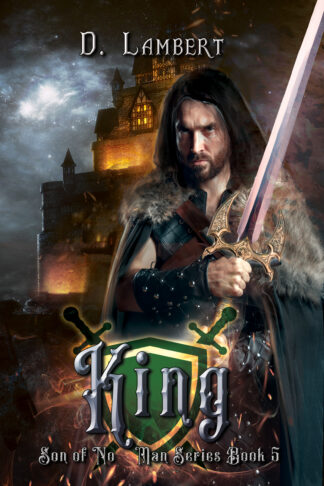
We hear about main characters all the time, but what about the others? You know, the love interest or the best buds for life, or even that sleazy merchant guy they still do business with. Being a character driven writer, I have a tendency to rely on my characters to help describe and flesh out my worldbuilding often. Most character driven books fall into the young adult and romance stories but in recent years we’re seeing this reach out and play in bigger worlds.
No longer do we need to describe our worlds as in-depth as Tolkien or the forefathers of fantasy and science fiction. Authors and readers often ask me for advice on how to capture worldbuilding when you’re a character driven writer and the secret to this is simply: use your characters and let them do the describing! This means not only making the time to address what they see, but pull in all the senses at any given moment as well as their internal thoughts or emotions in reply.
- Sight – The rows of orange groves shifted as we drove past them.
- Sound – Dad’s got the old country music blaring on the radio.
- Smell – Orange blossom’s fill the air with a bittersweet citrus scent.
- Touch – I want to put my arm on the window, but the summer’s sun has it too hot to touch.
- Taste – Popping another slice of orange, I chew on the juicy nugget, sweet on my tongue.
- Thought – Next we’ll be going to Hancock Groves and after that, finally we get to do some fishing!
- Emotion – Thinking back on that day, my chest aches knowing it’s all gone and buried under houses and golf courses.
How many times have you found yourself hating a character up until you see them broken down by a single moment in a story? Main characters will always be the easiest to flesh out because they always get the full attention of the plots and twists of the story we intend to tell. As you move to your support and secondary characters, they often push and support our main character but they also give us a second opinion on the world that may conflict with the main character. Background characters and tertiary characters fall very flat in comparison to the main characters they are interacting within the world you are creating. This doesn’t hurt your story, but neither does it help your audience connect with the world your characters live in.
Regardless, this is like creating an American football team where you have your star players, a quarterback and a fan favorite for support, then the other guys on their team, the rival team’s star player, and the people in the stands. The levels get more and more disconnected from the reader the further you dive into the background, or world, such as the hot dog stand or the announcer. In the end, you can’t experience the world or even plot in its entirety without all the components. What good is the football game without the ticket booth to get in nor the ability to buy beer and hot dogs!
Main Characters
All stories have a tone or essence, whether it’s surreal, dark, tragic, happy, romantic, or some other emotion that is constantly tugged at throughout the storyline. It’s not the events and plot that allow the readers to feel this tone, but the main characters in which live in this world. If the world is dark and horrible, it’s because the main character feels this way about where they live through their experiences, emotions, reactions, thoughts, body language, how they speak to others, and so on.
Main character should be crafted with the awareness that this is the main vessel your audience is riding along with, or even inside, to travel along your plot. Even with a narrator or narrative style, we are still focusing on a main person in whom we are interacting with this world and even story. Take a moment and dissect some of your favorite main characters and their worlds. How much of your favorite memories of them involve how they reacted to something in their story? Now ask yourself if that’s what helps you identify the type of person they were? These are the ways the main character help set the tone for the readers while revealing who they are as fleshed out, rounded characters.
In the end, these characters should be the most intimate with your readers and writing. Immersion happens through them and thus the way you develop their personality and inner-workings can go a long way to make it easier for you to write your story. Granted, not every story is focused on one character, which opens doors for you to show more of your character through their interactions and even flip perspectives to show the world through more than one personality. What one character deems threatening will seem less of a concern to the more experienced fighter.
Always remember, this is the main transportation for your readers and their way in and out of your story!
Secondary Characters
Often this is the lover or faithful friend that joins the main character at some point and sticks around for the long haul. It can even be the hero’s faithful steed, a pet, or a spirit that haunts them. These characters help give a second perspective to the world and events, and as a result, add depth to the world they are part of. They even are the eyes and reactions we use to properly judge the main character’s emotional and physical states.
Granted, the secondary character doesn’t always have to like and aid your main character, but they should always help the audience become more immersive in the world and story. They even make the main character more tangible through interactions, including love interest and aggressive rivalry. For example, in my novel Cedric the Demonic Knight the main character is bitten by a venomous monster-sized snake. In order to express the severity of this injury, I shifted from Cedric’s perspective (Main Character), which was failing as the venom took hold, and started to express his condition through the interactions with Angeline (Secondary or Support Character). When the main character is taken out, it is these characters that help the writer to continue to push the plot forward without leaving gaps and confusion. Sometimes this switch is referred to as “head-hopping”, but the key is when writing your secondary characters make sure the reader is aware they are now riding in a “new car” and to keep clarify who is doing what.
His eyes grew wide as he gripped his arm and sweat poured over him, his tanned skin paling with alarming speed. He attempted to stand, but stumbled to the side and fell to his knees. It became very clear that he was not bouncing back from this encounter. Angeline looked around, there were no signs of any more snakes, but Barushka [their horse] was missing. Jerking the bandages from her pack, she attempted to tie off the poisoned limb. He tried to shove her away, but engulfed in the pain, he struggled to keep himself sitting. Satisfied that she managed to get it tight enough, and the wounds covered, she whistled several times. Her only hope was that Barushka was still alive and close enough to hear it. The sound of something splattering the ground brought her back to Cedric as he began to puke. The smell was unnatural, and it was a sickening black color.
Support Characters
Usually discussions state that secondary characters are support characters, but in my own writing there is a huge difference in choosing who is which. In short, secondary characters don’t have to aid or help a main character which could present an issue when developing a world and plot at times. In fact, they can even make their lives more complicated, impeding their goals.
As for a support character, they can also be a secondary character but not always. What they are designed for is to be a constant pillar of support for the goals, growth, and development of the main character or even a secondary character can have a support character-WHAT! Crazy, but think about how real relationships work and how it influences how we see the world, or opens opportunities to expose how we feel about things in our world. Whether they are encouraging their good or bad habits, that’s totally up to you and the story you are writing.
In the story Robin Hood, there is a prime example of a support character that is well-rounded. Breaking things apart, we have the main character Robin Hood, secondary characters Little John (Fellow Outlaw) and Maid Marian (Love Interest), and a very memorable support character: Maid Marian’s servant/caretaker/maid/Fellow Lady of the Court. In most versions of the story, this character has a lot of personality. She’s a fighter, she encourages Maid Marian’s love interest, but she isn’t needed for the story to continue per say. What she does is gives the audience another means to experience the world, story, and add to our connections with the other characters.
Sometimes these support characters simply give the world its life and more depth while providing a comic relief or address the audience’s own thoughts or feelings about what happens. They are essential tools to aid the writer to set the story in motion and guide their characters to their next event. Bottom-line, these “support characters” are the rounded characters that support some part of the story and actively support the world and plot. Almost like your own, self-made shoe cobbler elves.
Tertiary Characters
Lastly, we come to characters that fall victim to being flat or just nothing more than bland dialogue. Sometimes they are missing completely and can cause worldbuilding to feel shallow. In movies it is far easier to give these characters flesh with body language, but for written stories these often fall victim to becoming what I refer to as “background fodder.” Granted, you are going to have flat characters, like a crowd of people reacting to an event and never seen or heard from, nor provided depth of names, what they wore, and so on unless somehow it was relevant to the plot.
This doesn’t mean you can’t have fun with a tertiary character and make them more round in how they behave. This can be a merchant, one that the characters find themselves coming back to since he always seems to have what they need or want. Why not make him quirky, comical, creepy? Give him enough personality to add to the tone of the story and give yourself a chance to expose interactions through someone other than the obvious secondary or support characters who actively lives at a different pace and level in the world.
For example, in the movie Robin Hood starring Kevin Costner, they make use of this idea. At one point in the movie, Robin approaches a Tertiary character, a small boy who is shooting arrows at a target. Robin Hood (Main) asks if the boy can shoot just as well while distracted. After failing, Lady Marian (Secondary) poses the question if he is able to do so himself. The nice thing this does is imply that Robin is no different from a young boy through the interaction and failing of the third character while being guided and pushed by a secondary character’s perspective/influence.
It is something you will see in great writing often, when your main character finds themselves observing a rounded tertiary character and using it to reflect thoughts, feelings, and more. I even have a moment where my main character Romasanta reflects back to a tertiary character to express the mood and care being given to Cedric in the book Romasanta: Father of Werewolves.
Huffing, [Badbh] bellowed, “Well, you are up here after all!”
Her voice brought some movement to [Cedric’s] pale body, his eyes cracking open as his chapped lips whispered, “Angeline?”
“Oh no! Wrong girl, lover boy.” Chuckling, Badbh’s magic was impressive as she summoned cloths for his wounds. As she worked to clean his lacerations, Romasanta recalled fond memories of the woman from the Leper’s Colony tending to the ill girl. “Looks like I missed a hell of a battle!”
“What are you doing?” Hissing, Cedric gave a baffled stare at his unhealed wounds. “Who are you?”
“For crying out loud, it’s me, Badbh!” Puffing, she scrubbed harder, annoyed at how unaware he allowed himself to become. “We found you out here bleeding to death! Who the hell did you get in a fight with?”



